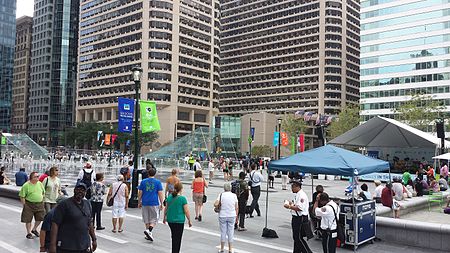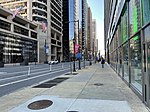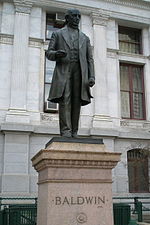Philadelphia, often called Philly, is the largest city in the Commonwealth of Pennsylvania and the second-largest city in both the Northeast megalopolis and Mid-Atlantic regions after New York City. It is one of the most historically significant cities in the United States and served as the nation's capital city until 1800. The city's population at the 2020 census was 1,603,797. Since 1854, the city has been coextensive with Philadelphia County, the most populous county in Pennsylvania and the urban core of the Delaware Valley, the nation's seventh-largest and one of the world's largest metropolitan regions with 6.245 million residents in 2020. Philadelphia is known for its extensive contributions to American history and for its role in the life sciences, business and industry, art, literature, and music.Philadelphia was founded in 1682 by William Penn, an English Quaker and advocate of religious freedom. The city served as the capital of the Pennsylvania Colony during the British colonial era and went on to play a historic and vital role as the central meeting place for the nation's founding fathers whose plans and actions in Philadelphia ultimately inspired the American Revolution and the nation's independence. Philadelphia hosted the First Continental Congress in 1774 following the Boston Tea Party, preserved the Liberty Bell, and hosted the Second Continental Congress during which the founders signed the Declaration of Independence, which historian Joseph Ellis has described as "the most potent and consequential words in American history". Once the Revolutionary War commenced, both the Battle of Germantown and the siege of Fort Mifflin were fought within Philadelphia's city limits. The U.S. Constitution was later ratified in Philadelphia at the Philadelphia Convention of 1787. Philadelphia remained the nation's largest city until 1790, when it was surpassed by New York City, and served as the nation's first capital from May 10, 1775, until December 12, 1776, and on four subsequent occasions during and following the American Revolution, including from 1790 to 1800 while the new national capital of Washington, D.C., was under construction.
With 18 four-year universities and colleges, Philadelphia is one of the nation's leading centers for higher education and academic research. As of 2021, the Philadelphia metropolitan area was the state's largest and nation's ninth-largest metropolitan economy with a gross metropolitan product of US$479 billion. The city is home to five Fortune 500 corporate headquarters as of 2022. The Philadelphia skyline, which includes several globally renowned commercial skyscrapers, is expanding, primarily with new residential high-rise condominiums. Philadelphia and the Delaware Valley are a biotechnology and venture capital hub; and the Philadelphia Stock Exchange, owned by Nasdaq, is the nation's oldest stock exchange and a global leader in options trading. 30th Street Station, the city's primary rail station, is the third-busiest Amtrak hub in the nation, and the city's multimodal transport and logistics infrastructure, including Philadelphia International Airport, the PhilaPort seaport, freight rail infrastructure, roadway traffic capacity, and warehouse storage space, are all expanding. A migration pattern has been established from New York City to Philadelphia by residents opting for a large city with relative proximity and a lower cost of living.Philadelphia is a national cultural center, hosting more outdoor sculptures and murals than any other city in the nation. Fairmount Park, when combined with adjacent Wissahickon Valley Park in the same watershed, is 2,052 acres (830 ha), representing one of the nation's largest and the world's 45th-largest urban park. The city is known for its arts, culture, cuisine, and colonial and Revolution-era history; in 2016, it attracted 42 million domestic tourists who spent $6.8 billion, representing $11 billion in economic impact to the city and its surrounding Pennsylvania counties.With five professional sports teams and one of the nation's most loyal fan bases, Philadelphia is often ranked as the nation's best city for professional sports fans. The city has a culturally and philanthropically active LGBTQ+ community. Philadelphia also has played an immensely influential historic and ongoing role in the development and evolution of American music, especially R&B, soul, and rock.Philadelphia is a city of many firsts, including the nation's first library (1731), hospital (1751), medical school (1765), national capital (1774), university (by some accounts) (1779), stock exchange (1790), zoo (1874), and business school (1881). Philadelphia contains 67 National Historic Landmarks, including Independence Hall. From the city's 17th century founding through the present, Philadelphia has been the birthplace or home to an extensive number of prominent and influential Americans. In 2021, Time magazine named Philadelphia one of the world's greatest 100 places.









